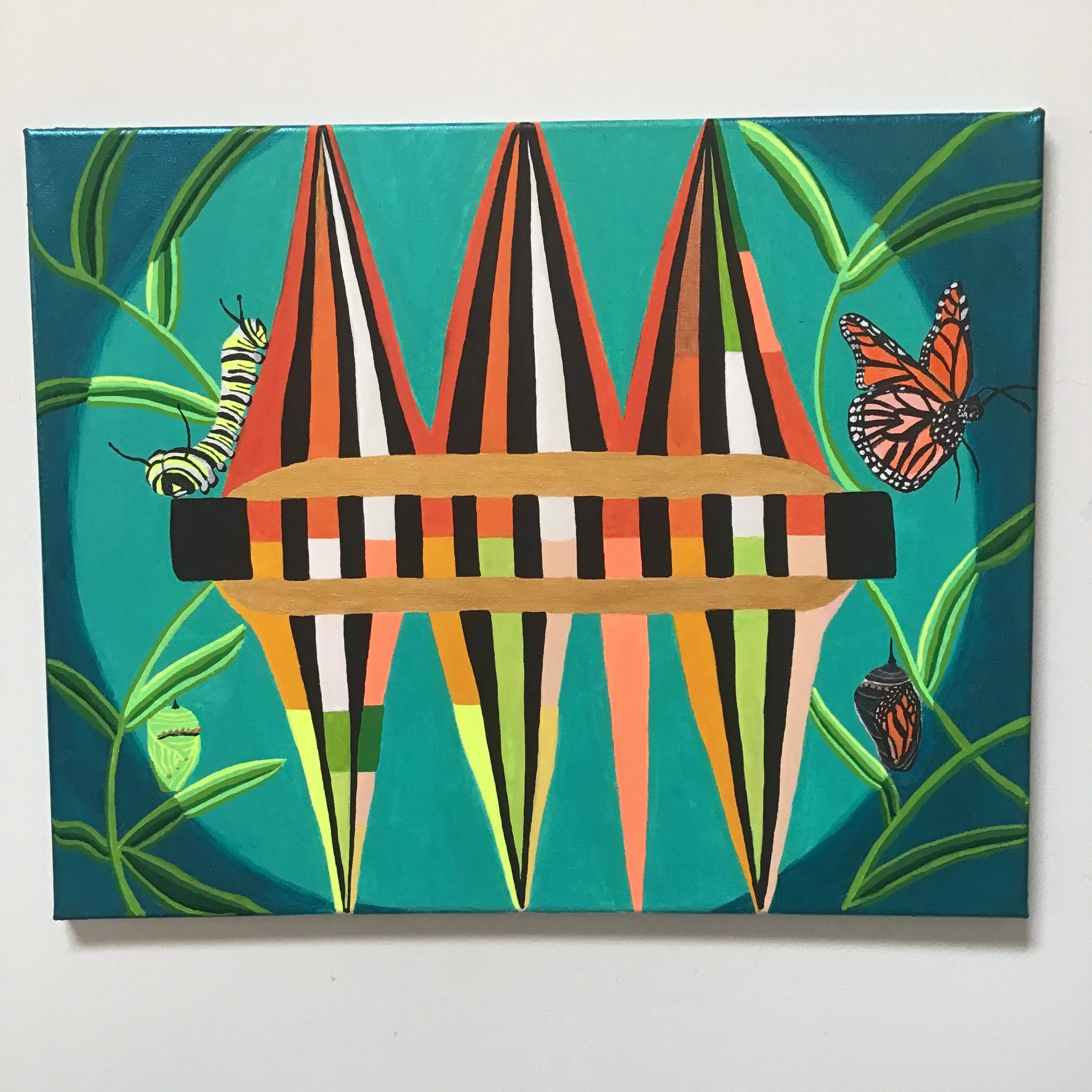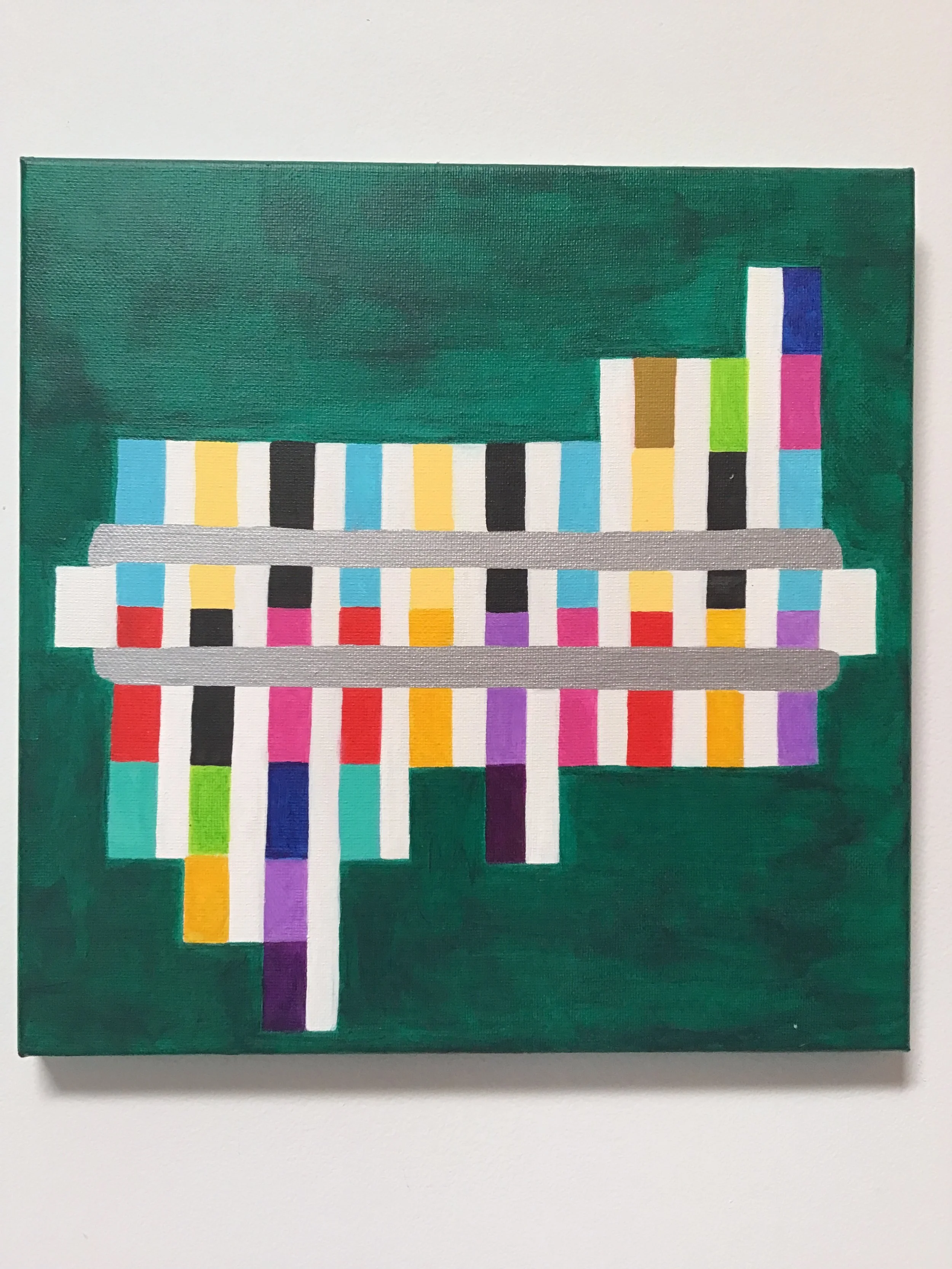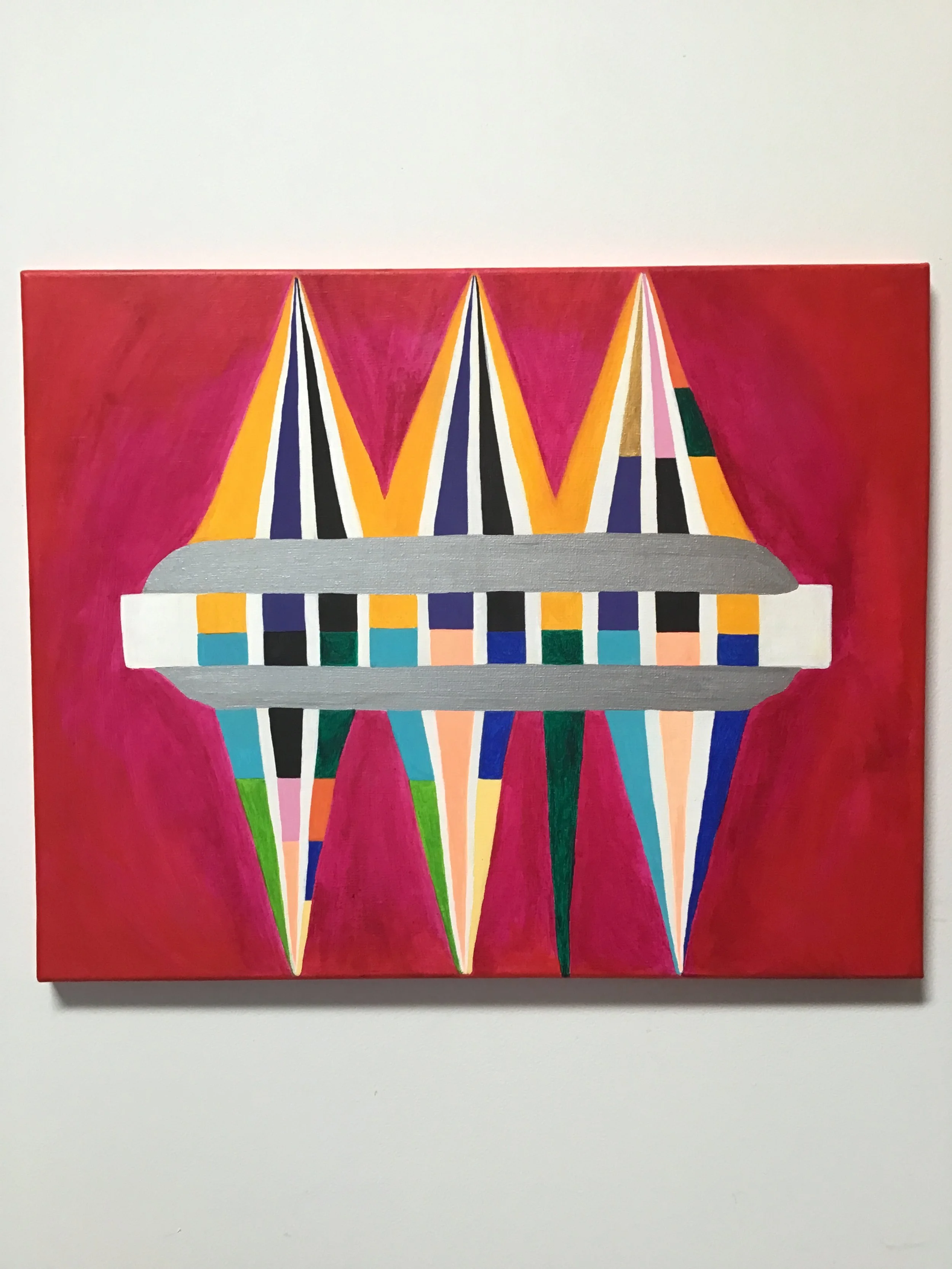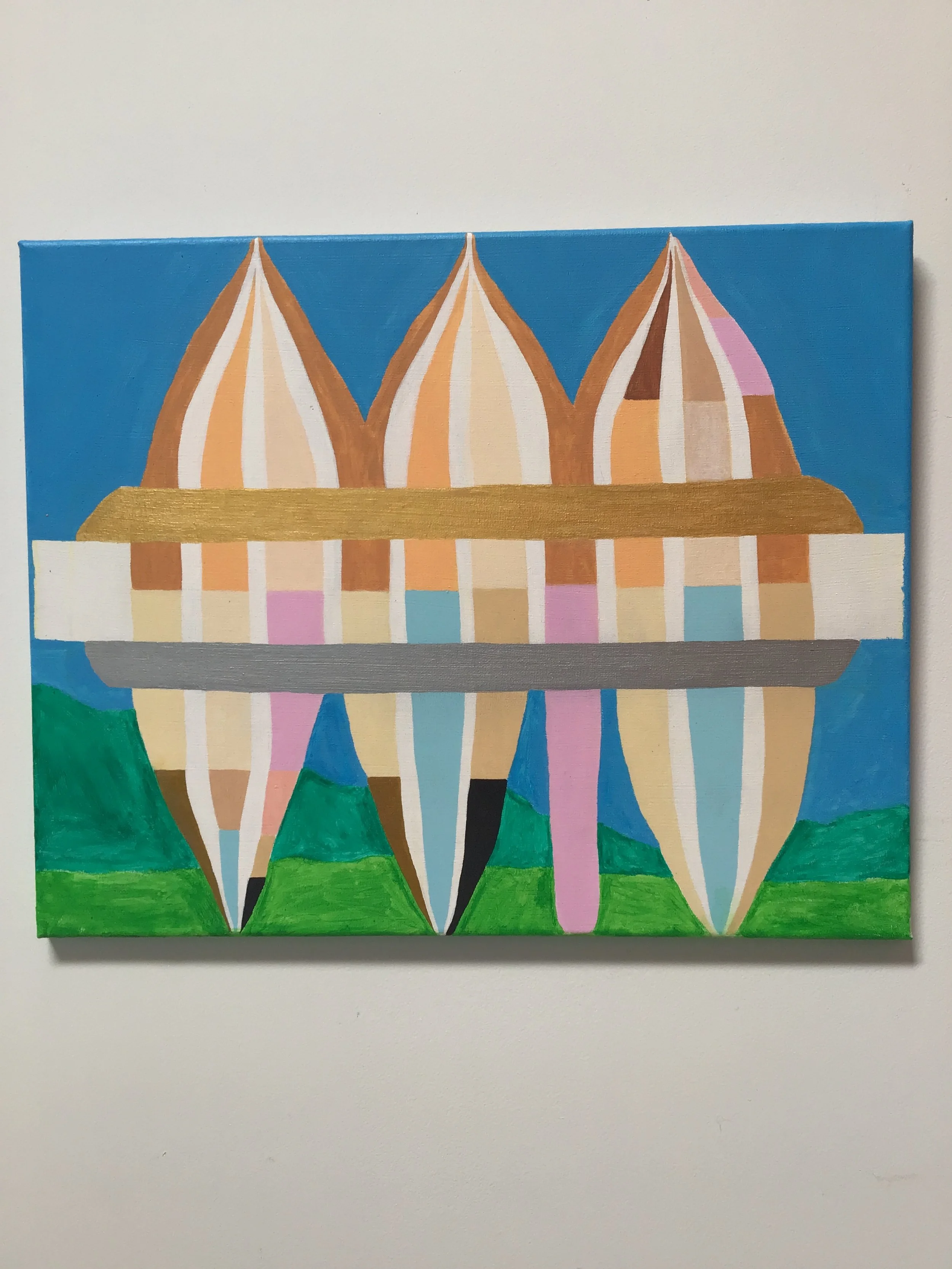Harmonica Theory as Art
An educational tool to learn harmonica and a visual celebration of the beauty of harmonica theory.
“Monarch”
Acrylic on Canvas, August 3, 2025
Inspired by working as gardener at Pan’s Garden Nursery, where the artist saw a monarch caterpillar for the first time. The striking yellow, black, and white stripes of the caterpillar inspired her to make a “Harmonica Theory As Art” piece based on the colors of the monarch butterfly’s metamorphosis from caterpillar, to chrysalis, to butterfly. It is the artist’s dream to see a monarch chrysalis in person.
“l lV V Marigold”
Acrylic on Canvas, 2021
The I, IV, and V chords are the foundation of blues.
In this painting, rectangles and triangles map the I, IV, and V chords on the diatonic harmonica.
Rectangles:
Colorful rectangles show each hole in the harmonica, totaling 10 holes.
Each hole is color coordinated to show the layout of each note playable on the harmonica.
Matching colors represent matching notes.
The bottom row of rectangles shows the unbent notes on the “draw,” or inhale.
The top row of rectangles shows the unbent notes on the “blow,” or exhale.
Triangles:
Triangles show the layout of the I, IV, and V chords.
Triangles show which groups of holes comprise the notes in each chord.
Matching colors of triangles represent matching chords.
The downward triangle on the bottom shows the I chord in aqua green, played on the “draw.”
The 3 white triangles on top represent the IV chord, which is played in 3 octaves on the “blow.”
The 2 downward triangles on the bottom show the V chords in black, played in two octaves on the “draw.”
“I, IV, V in Marigold” is helpful for an at-a-glance reminder of where to find the I, IV, and V chords on your harmonica. To keep it visually simple as a representation of the I, IV, and V chords, it does not detail the bends on the “draw” and “blow” notes.
“Deep Blue Sea”
Acrylic on Canvas, 2021
“Deep Blue Sea” maps the theory of the diatonic harmonica, bends included.
Rectangles:
Colorful rectangles show each hole in the harmonica, totaling 10 holes.
Each hole is color coordinated to show the layout of each note playable on the harmonica.
Matching colors represent matching notes.
The bottom row of rectangles shows the unbent notes on the draw, or inhale.
The top row of rectangles shows the unbent notes on the blow, or exhale.
Triangles:
Triangles map the I, IV, and V chords.
Stripes:
Each stripe that descends on the bottom, represents each “draw” note.
Each stripe that ascends on the top, represents each “blow” note.
Matching colors within each stripe represent matching notes.
Colors within each descending stripe on the bottom represent the descending bends on the “draw” (holes 1-6).
Colors within each ascending stripe on the top (holes 8, 9, 10) represent the descending bends on the “blow.” Though these “top” bends are played on the “blow,” their notes descend.
Hole 7 has no bend, so there is only one color in the descending triangle, the color of the unbent “draw” note matched by its rectangle.
Colors map the octaves, with matching colors representing the same note as it appears in any of its octaves.
“Deep Blue Sea” shows the detailed map of the theory behind the diatonic harmonica, helping players visualize where to find chords, notes, octaves, and bends. To keep it accessible for beginner-to-intermediate harmonica players, the overblow notes are excluded.
“Purple Royale”
Acrylic on Canvas
“Purple Royale” maps the diatonic harmonica in shape and color, using the same principles as the original map “Deep Blue Sea,” with colors inspired by a favorite bright, striped dress owned by the artist.
“Windows”
Acrylic on Canvas, 2023
“Windows” maps the diatonic harmonica in rectangles that show the number of notes on descending bends and ascending draws.
With this rectangle design, harmonica players can easily identify which holes have notes on bends, including Hole 3, which has 3 bends on the draw.
Hole 6 has 1 bend on the draw.
Holes 7, 8, 9, and 10 have no bends on the draw.
However, players can see that Holes 7, 8, 9, and 10 have bends on the blow, shown by the ascending rectangles and corresponding colors that show each note’s placement.
“Rosie”
Acrylic on Canvas, 2023
“Rosie” shows the original harmonica map design in triangles and rectangles, with a color palette inspired by electric neon pink and red ombre of the artist’s geranium flowers at home.
“Felino Puff”
Acrylic on Canvas, 2024
“Felino Puff” begins the series’ first foray into double-abstract art, with an abstract portrait of harmonica theory and her beloved cat Felino Puff, to honor his life and grieve his death.
Felino Puff was a flame point Siamese cat, with cream color fur and subtle orange stripes, orange ears and tail, neon blue eyes with black pupils, and soft pink ears, nose, and tongue. “Felino Puff” shows Felino Puff’s color palette and formats the shapes of his ears and tongue into the original harmonica map design, which abstracts harmonica theory as art.
Behind the harmonica map, the artist shows the mountain, valley, and sky where Felino Puff lived in abstract bands of sky blue, deep green, and bright green.







